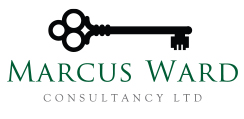Big Brother is watching you…
It always used to be the case that “Control Visits” aka VAT inspections were decided by a business’
- turnover
- VAT complexity
- business complexity
- structure
- compliance history
- previous errors
The more ticks a business gets the more inspections it will receive. Consequently, a business with a high turnover (a “Large Trader”) with many international branches providing complicated financial services worldwide which has failed to file returns by the due date and has received assessments in the past will be inspected almost constantly. Tick only a few of the boxes and a sole trader with a low turnover building business will still generate HMRC interest if it has received assessments in the past or is constantly late with its returns.
These visits are in addition to what is known as “pre-credibility” inspections (pre-creds). Pre-creds take place in cases where a business has submitted a repayment claim. HMRC will check whether the claim is valid before they release the repayment. These may be done via telephone, email, or in person, and may lead to a full-blown inspection.
In addition, there was always a random element with inspections generated arbitrarily. The usual cycles were: six monthly, annually, three yearly, five yearly, or less frequently. On occasions, the next inspection would depend on the previous inspector’s report (they may, for instance, have recommended another inspection after a future event has occurred).
The Connect System
Although elements of the above “tests” may still apply, many inspections now are based on intelligence obtained from many sources. The main resource is a data system which HMRC call “Connect”. This system feeds from many bases and forms the basis of many decisions made by HMRC. Instead of HMRC relying on information provided by businesses on VAT returns, Connect draws on statistics from myriad government and corporate sources to create a profile of each VAT registered business. If this data varies from that submitted on returns it is more likely that that business will be inspected. As an example: HMRC obtains anonymised information on all Visa and MasterCard transactions, enabling it to identify areas of likely VAT underpayments which it can then target further. Other sources of information are: online marketplaces – websites such as eBay and Gumtree, as well as Airbnb can be accessed to identify regular traders who may not be VAT registered. Additionally, it can also access Land Registry records, so these can be checked not only to see what properties have been sold (and ought to have been subject to output tax) but what properties have been purchased (in order to determine whether a taxpayer is likely to be able to afford such properties).
The Connect system can also examine public social media account information, such as; Twitter, Facebook and Instagram using sophisticated mechanisms along with being able to access individual’s digital information such as web browsing and emails.
It is understood that less than 10% of all inspections are now random.
The £100 million plus Connect project is, and will be, increasingly important as HMRC is losing significant resources; particularly well trained and experienced inspectors. With many local VAT offices closing there is also a concern on the ground that a lot of “local knowledge” of businesses has been lost.
Big Brother really is watching you…. And if you are on the receiving end of an inspection, there is a circa 90% chance that there is a reason for it!
For information on how to survive a VAT inspection, please see here.
I always suggest that if notification of an impending inspection is received a pre-visit review is undertaken to identify and deal with any issues before HMRC arrive and levy penalties and interest.
